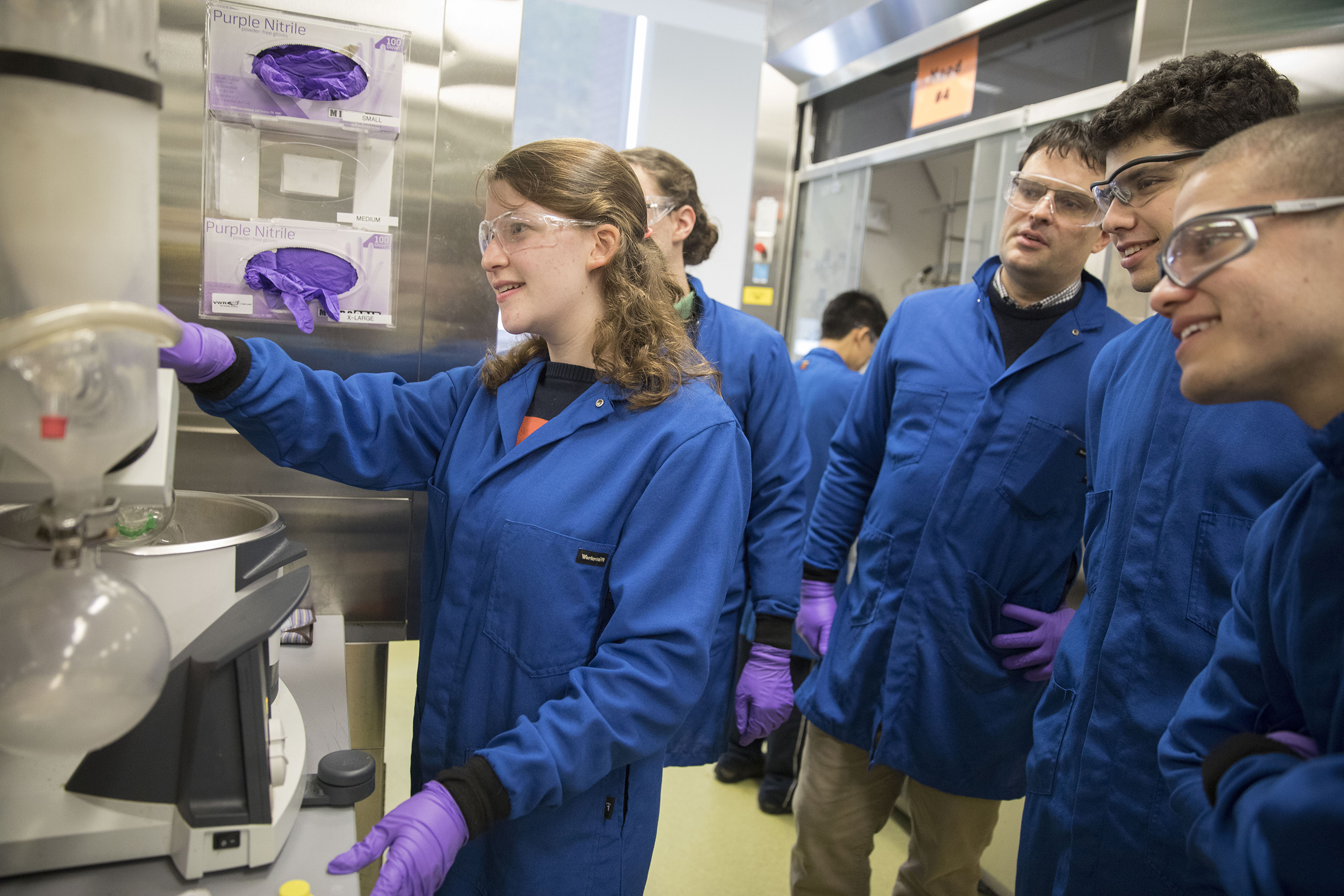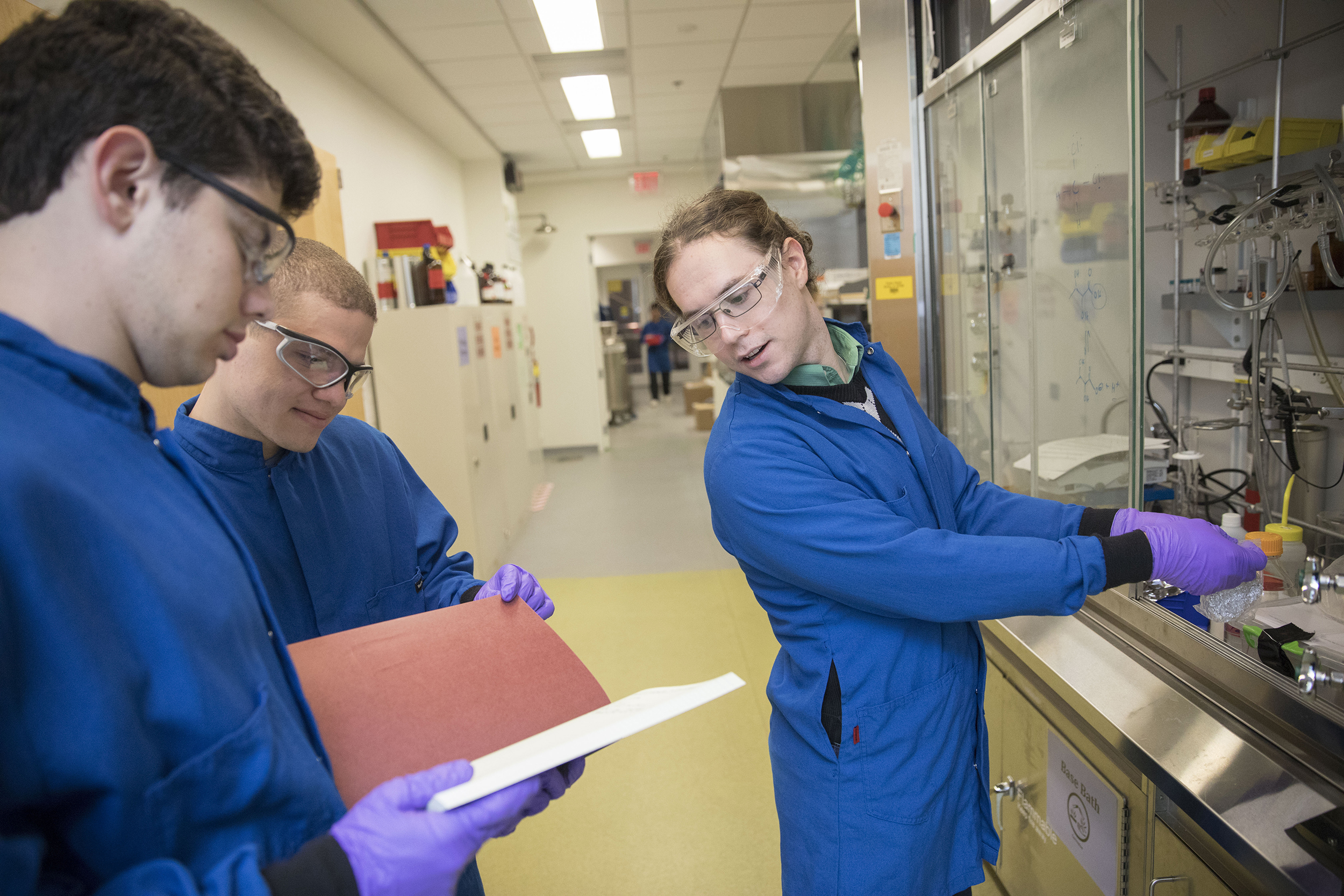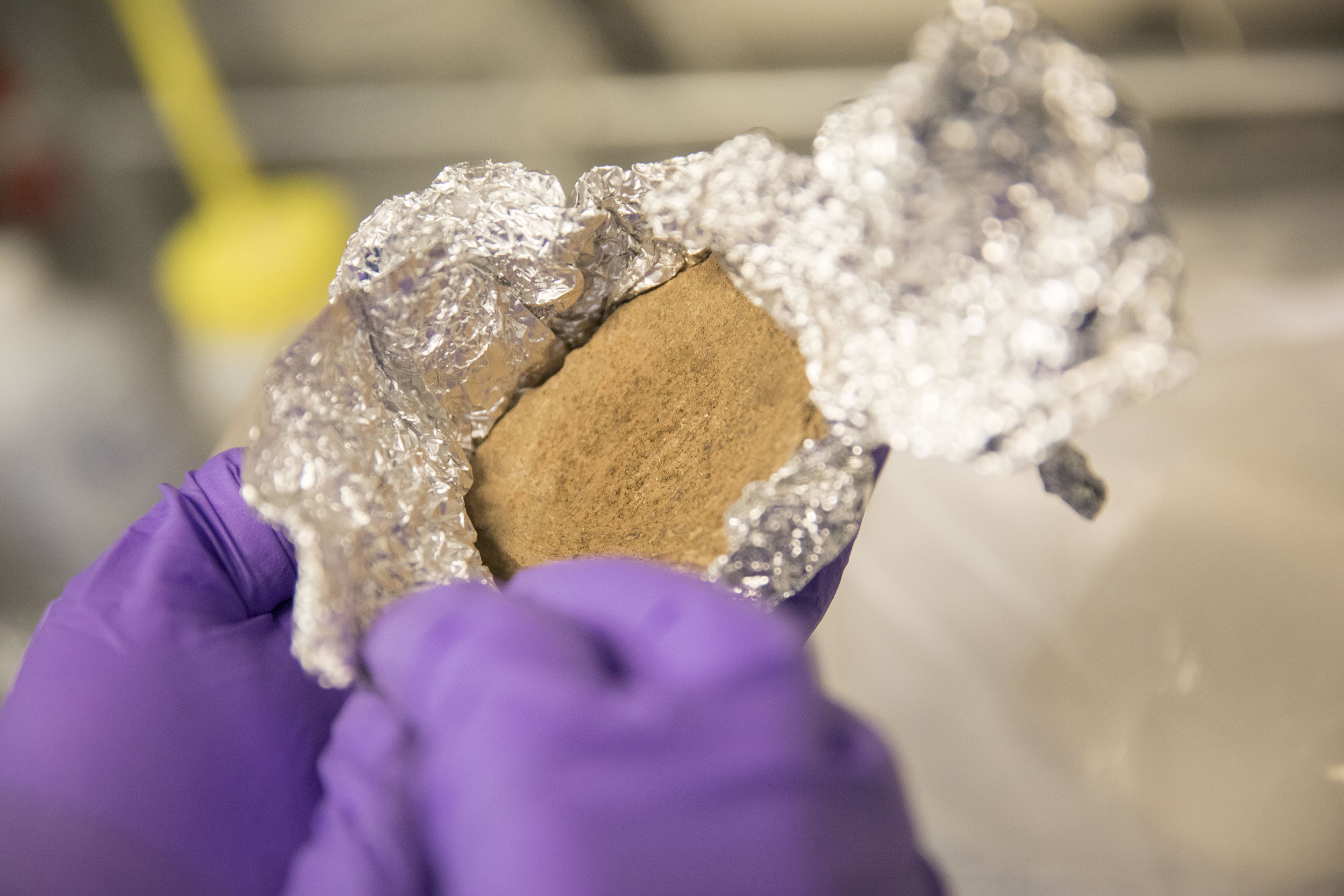
Inside the Northwest Labs, Julia Strauss ’19 (from left), instructor Gojko Barjamovic, Bary Lisak ’19, and Jordan Donald ’18 apply a chemical to the pottery. “These samples that we are working on have never been touched before,” Strauss said.
Kris Snibbe/Harvard Staff Photographer
Feast for the mind
‘Ancient Lives’ gives students a sense of earliest traditions, including the last meal before a sacking
For undergrads who want to party like it’s 1999 B.C., “Ancient Lives” is a perfect fit.
For the past three years, students in the General Education course have gained a better understanding of their own world by examining the traditions of early civilization. And what better way to connect antiquity to modern times than through the high-octane Mesopotamian feast?
“The feast is the mass media of the ancient world — it brought people together and established social hierarchies,” said instructor Gojko Barjamovic, a senior lecturer on Near Eastern languages and civilizations. “Our physical functions and intellectual faculties remain unchanged across time and culture, and so our body can be used to link students in a tangible way to our remote ancestors.”

Those connections have informed a range of class projects. Students have created plaster models of reliefs that once hung in Assyrian royal palaces, played replicas of the world’s oldest known instruments, studied ancient medicine, and cooked meals and brewed beer based on Mesopotamian recipes. This fall they also got their (gloved) hands dirty, examining unearthed pottery from a Turkish palace razed by invaders around 1200 B.C. The recovered pieces, possibly used at a final feast before the attack, represent a “frozen moment in time,” said Barjamovic.
Students turned to cutting-edge science to investigate what the pottery might have contained, after first donning lab coats, glasses, and rubber gloves to minimize the threat of contaminating the delicate samples — just one errant skin cell could have introduced 21st-century fatty acids and ruined test results. Students gently scraped powdery samples from the pottery shards, treated them in solutions of dichloromethane and chloroform, and placed them in gas and mass spectrometers to determine their molecular makeup. Remnants of tartaric acid hinted at wine.

Trace residues discovered on pottery from around 1200 B.C. may represent a “frozen moment in time,” providing insight into the food and drink that were consumed.
Kris Snibbe/Harvard Staff Photographer
The project was an opportunity for students to add to knowledge of the ancient world, Barjamovic noted.
“The technique of analyzing ancient pottery for chemical traces of what it contained in antiquity is a new field, still in its infancy,” he said. “So students are not only learning about the time period, they are actively contributing to research.”
The hands-on approach was popular with Julia Strauss ’19, a linguistics concentrator with a secondary in human developmental and regenerative biology. Courses on history struck her as “distant and removed,” she said, until Barjamovic’s class made it immediate and concrete.
“These samples that we are working on have never been touched before,” Strauss said. “They were collected in soil, so by holding them, analyzing them, we are the first to [touch them] in 3,200 years. That’s just incredible and it really brings the history to life.”
Strauss connected the ancient pottery experiments to one of her extracurricular activities: a ceramics class in Cabot House’s Third Space art studio. “Right after lab I got to ceramics each week. So I see these samples that are 3,200 years old … and then I create my own.”
Another highlight was the chance to sample Mesopotamian fare. During one assignment Strauss and her classmates prepared a Mesopotamian mutton stew flavored with beer, beets, coriander, arugula, leeks, garlic, soapwort, and cumin.
For Strauss, the curriculum worked according to Barjamovic’s vision. It brought history forward to the present day, she said, and made the ancient past something she will “make references to and think about, for a long time.”




